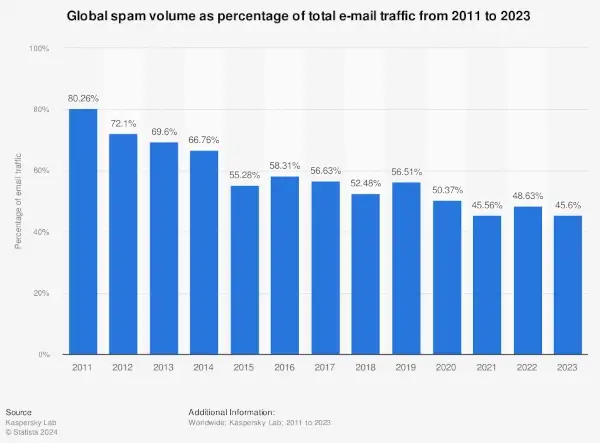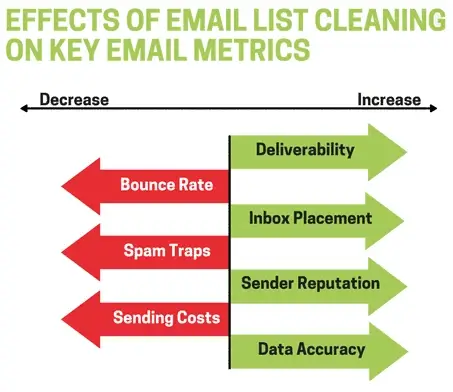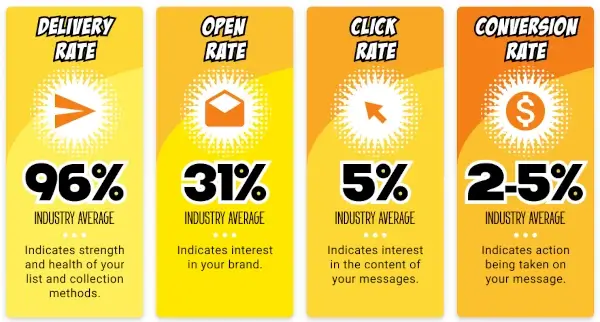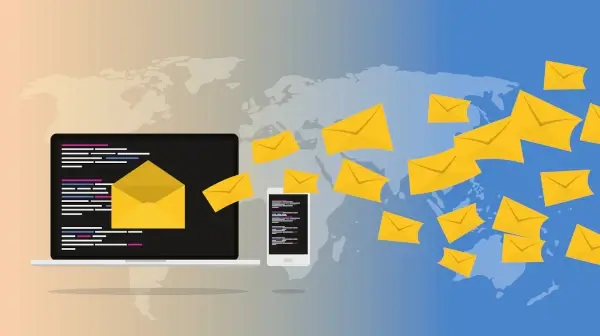
More than 300 billion emails are sent every day, a staggering number. If you focus more on business-related emails, the average office worker sends 40 emails per day, and the average person receives 121 business-related emails every day. With so many emails being sent and received, is it any surprise that a lot end up in the spam folder?
Email hygiene should be a primary focus if you’re an email marketer or if you send regular emails as part of your job. Practicing good email hygiene can increase the number of your emails read, leading to higher conversion rates. But just what is email hygiene, and how can you implement it to avoid spam traps?
Table of Contents:
What is Email Hygiene?
Why is Email Hygiene Important?
When Should You Consider Email Hygiene?
Top Tips for Practicing Good Email Hygiene
Conclusion
What is Email Hygiene?

Put simply, email hygiene is the process of ensuring your business’s email contact list is clean and up-to-date. That can include removing dead and invalid email addresses, as well as those that you have identified as uninterested. By having good email hygiene, you can be more sure that you are sending your emails to people with a valid interest in your brand and products.
In 2023, 46% of the total emails sent were considered spam. While many of these emails may be genuine spam (fraudulent or promoting financial scams), many others are from legitimate companies whose emails are flagged as spam for a number of reasons:
- The email sent hasn’t been fully authenticated.
- The sending IP has a bad reputation.
- Your domain has a poor reputation.
- Recipients have manually flagged the email as spam.
- You don’t have an email list with a hygiene policy.
- Spam filters are triggered by the email’s content.
- You don’t have a valid reply-to address.
- Any attachments look suspicious.
As you can see, there are numerous reasons why an email you may have legitimately sent could be flagged as spam. You also need to consider that email providers now track how people respond to emails, and if you have a large percentage of your emails flagged as spam, this could affect your email account.
Why is Email Hygiene Important?

You may think that with so many emails sent every day, email hygiene doesn’t need to be a priority. However, just as with your contacts on a unified messaging platform, you want to encourage high engagement levels.
1. Reputation
Reputation can be everything in business, which applies to your actions as an email sender. A good reputation increases deliverability, but sending emails to inactive or invalid addresses damages that reputation and can result in your emails being marked as spam. Your email service provider (ESP) will track different metrics that can affect your reputation score.
These can include the number of recipients who choose to unsubscribe, the number of your emails manually flagged as spam, and your bounce rates. Good hygiene can help you maintain a good reputation.
2. Deliverability
The more emails you send, the higher the chances of them leading to a sale, right? It’s not that simple. If you don’t practice good email hygiene, it will adversely affect your email deliverability, and you’ll see your emails marked as spam or bouncing back.
3. Costs
Email marketing usually offers a good ROI (return on investment) of about $42 for every dollar spent. However, if your reputation has plummeted and you’re experiencing high bounce rates, your ROI will dramatically reduce.
4. Engagement
You want high levels of engagement in every part of your customer-facing work. As you collect information from your data processing pipeline, you will look for those levels. Poor email hygiene can mean subscribers are disengaged and won’t read or even open your emails.
When Should You Consider Email Hygiene?

In reality, email hygiene is something you should be doing regularly, perhaps once a month. But there should be red flags that make you do it for the first time:
- High bounce rate. If you’re seeing high bounce rates, then it’s time to get the mop and bucket out. They can indicate that you have invalid or inactive addresses on your list. This can affect reputation and deliverability, so it should be an immediate warning sign.
- Inactivity. If you’ve been inactive on the email front for a while, it’s worth cleaning your email list before resuming sending.
- Engagement. If you send emails to people uninterested in your content and offerings, you will experience low engagement.
- Complaints. When spam complaints increase, it’s time to clean your list. If people flag your emails as spam, it can negatively affect your sender’s reputation and lower your deliverability rates.
- Unsubscribes. Similar to complaints, if you see a high number of people unsubscribing to your email list, it’s time to spring clean.
Top Tips for Practicing Good Email Hygiene

Email hygiene is not just about one-off clean-ups; it’s about regularly auditing your email list to see what can be improved. Following these tips can help keep your email list healthy and engagement levels high.
1. Segmentation
Effective segmentation can not only keep your email list clean and more manageable, but it can also improve your marketing efforts. Look at your ideal buyer persona and the demographic groups that make up your customer base. This can cover everything from gender to spending power, geographical location, to size of business.
2. Opt-outs
Offering a double opt-out makes you less likely to have accidental subscribers. This means people must confirm their email address twice before being added to your subscribers’ list. It also helps ensure that the emails on your list are valid and belong to real people (and potential customers). This will boost your deliverability rates.
3. Inactivity
If you notice that people on your email marketing list haven’t engaged in a significant period, it’s best practice to remove them (though you may want to try the next tactic first). If you remove inactive subscribers, then you can boost both engagement and reputation while lowering the amount of spam complaints. If you have an extensive list, it can also reduce email marketing costs.
4. Reengagement
It may be worth targeting inactive subscribers with a reengagement campaign before completely removing inactive subscribers. You could send them discounts or special offers to see if it’s enough to reactivate them. If reengagement fails, then you can go ahead and remove them.
5. Monitor Deliverability
Monitoring your email list is something you should be looking at to track the level of email deliverability. Email round-trip monitoring can be applied to your incoming and outgoing email systems, and it can look for any delay issues or if emails are being lost.
6. Unsubscribe Option
There can be many reasons why people are no longer interested in your brand. Rather than wait for them to mark your emails as spam, provide easy unsubscribe options so they can remove themselves from your list. This also shows that you respect customer privacy.
7. Never Buy Lists
Not only is the purchase of email lists illegal in many countries, these lists are usually very low quality. Grow your email list organically. It can be a slow process, but at least you’ll know that the email addresses will be valid and high-quality.
8. Avoid Trigger Words
When it comes to the emails you send, always avoid using any spam trigger words. This is particularly important for the subject line, as this is the first thing recipients see. There are many such trigger words and phrases, but these are some of the most common:
- Free
- Make money fast
- Urgent
- Limited offer
- Buy now
- Act now
- Guarantee
- Make money fast
9. Optimize
It’s not just about your list but also the emails you send. In addition to avoiding spam trigger words, ensure your emails are optimized for every client and device. You can do A/B testing to find the right formula. Also, make sure the content you are sending is relevant. If your customers have expressed interest in communications, send relevant content, such as blog pieces titled “What is UCaaS?”
10. Providers
You’re doing everything right but still seeing poor results, so what could the problem be? If your ESP has a bad reputation, then that could affect you. Choose an ESP with a good reputation that offers tools that help you with your email marketing, such as analytics and email automation.
Conclusion

Your email marketing campaigns are extremely important. They can inform customers and potential customers about anything relevant, from special offers to new products. But if your email list is of low quality due to poor hygiene practices, your efforts will be largely ignored.
Good email hygiene is essential to maintain high rates of deliverability and engagement. Not only that, but poor hygiene can lead to you gaining an unwelcome,e poor sender reputation. Monitor your email list – and its connected metrics – regularly. Regularly maintaining good email hygiene can help you achieve and maintain good performance.
